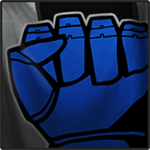 Murcheson, on 21 September 2014 - 05:31 PM, said:
Murcheson, on 21 September 2014 - 05:31 PM, said:
A side topic I've been pondering is who should lead a push? That is what type of mech is best suited. The assaults and heavies can take the most punishment, but are heavily penalized for a mis-step because of their lack of speed (assault and heavy drivers can attest to that). Lights have the advantage of speed so as to extricate themselves from a bad position (ambush) - but they are vulnerable due to their lack of armour. Perhaps mediums - which have a combination of armour and speed - I don't know.
This is a bit more off topic, but it's definitely my belief that pushes work best when they're not "led" by any specific sort of mech. And thoughts that they
should be led by a specific sort of mech ends up being used as an excuse to not do it.
What happens is if only one or two mechs lead into a push, they get focussed and slaughtered fast, which is both counterproductive and demoralizing. This is particularly true when a push is led by assaults.
There's a common belief that Atlases should lead from the front. They're wrong. The Atlas's armor is worth spit when it's focused by 3+ mechs. It shouldn't be in the back, either, but rather everyone should advance together. Particularly in a PUG, target saturation wins - and it's also why really passive play is counterproductive. People playing peekaboo end up being focused one after another as they peek. A couple mechs leading an assault? Again, handy focus targets. But when 8 mechs crest a ridge together, pushing down towards you? Who do you fire at? The biggest threat? The biggest threat [i]to you[/]? The easiest kill? There are good, proper answers to these, of course, but in reality what happens is the defenders tend to quickly break, uncertainty disrupting whatever coordination they may have had. The constant pressure, then - not a rush, just unrelenting pressure - keeps them off balance, and they don't have time to organize. Then the push turns into a roll.
Afterwards, people in the match will cry that it was a matchmaker failure, that Elo was broken, but neither are related to what happened. The defenders may have been individually better players. But that constant pressure denies them the possibility to coordinate, the target saturation makes focus fire difficult, and as soon as the attackers start killing, the "blood in the water" effect keeps them going.
That, incidentally, is where colored kill text will help a lot (Brian Buckman had a screenshot of it, should be in game soon) and where a solid player pushing forward rather than staying to the back and using his teammates of meat shields makes a huge, huge difference. Getting an early kill or two in a push is critical to the psychological aspects of it.
 Grayblue, on 21 September 2014 - 03:28 PM, said:
Grayblue, on 21 September 2014 - 03:28 PM, said:





























